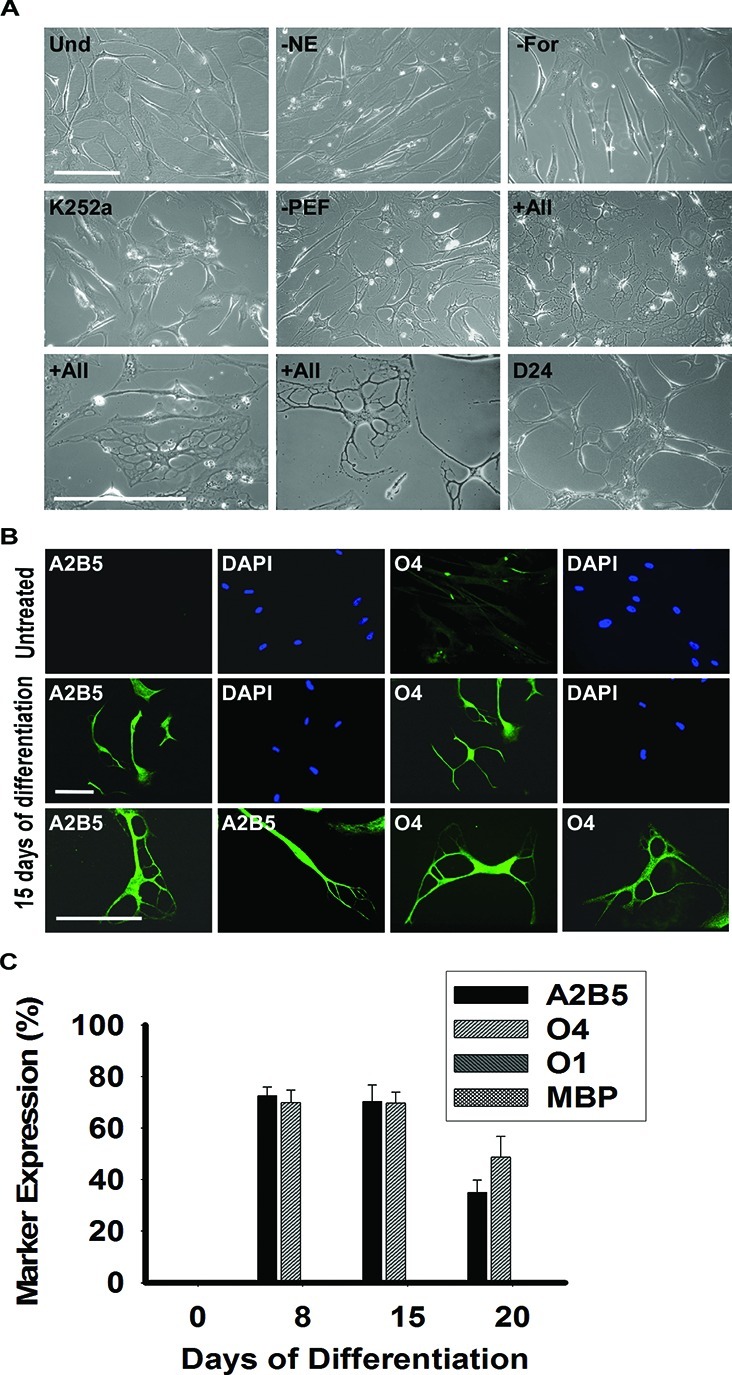Figure 2.

Phase contrast images and immunocytochemical analysis of differentiating MLPCs in a 2D environment. (A) Undifferentiated MLPCs (Und) exhibited fibroblast morphology. Cells after 15 days in differentiation medium without NE, forskolin (For), or K252a retained their fibroblast morphology. Process formation was visible in the medium without growth factors PDGF-AA, EGF, and bFGF (PEF). Refractile cell bodies and an increased level of process formation were observed in the presence of all factors indicated above for days 15–20. Cells lost their multipolar morphology and became bipolar or spindle-shaped after approximately 20–24 days. The scale bars are 100 μm (20× and 40× magnification). (B) Immunocytochemical analysis of differentiating MLPCs in a 2D environment. The untreated MLPCs showed negative staining for A2B5 and faint staining for O4. After differentiating for 15 days, cells exhibited positive staining for A2B5 and O4, characteristics of immature oligodendrocyte precursor cells. The scale bars are 100 μm (rows 1 and 2, 20× magnification; row 3, 40× magnification). (C) MLPCs do not differentiate into committed oligodendrocytes in a 2D environment. After differentiation for 8 days, 72.4% of cells were positive for A2B5 and 69.9% for O4, and after 15 days, 70.3% of MLPCs exhibited positive staining for A2B5 and 69.7% for O4. After 20 days, 35.0% of cells remained A2B5 positive and 49.7% O4 positive. Expression of O1 galactocerebroside and MBP was absent in both untreated and differentiating cells. Error bars represent the SD.
